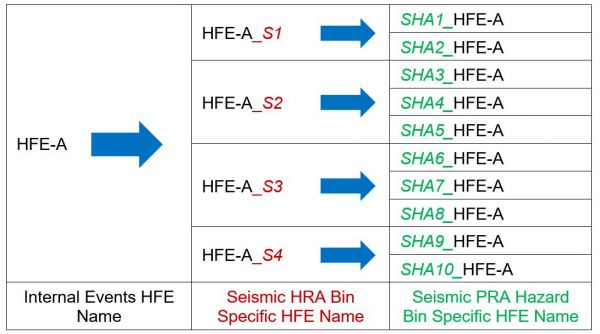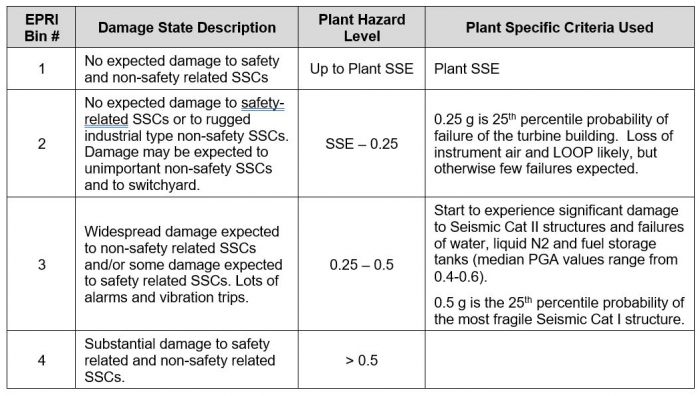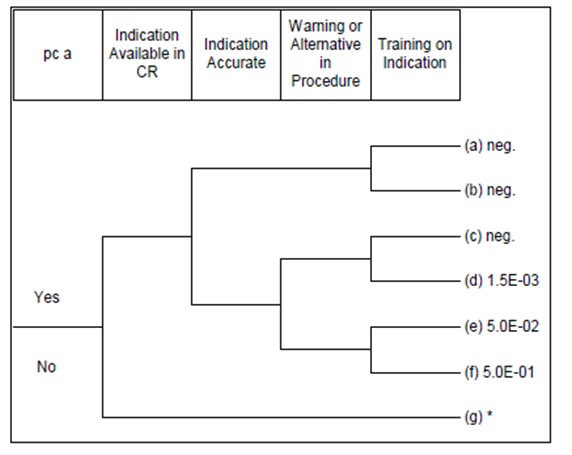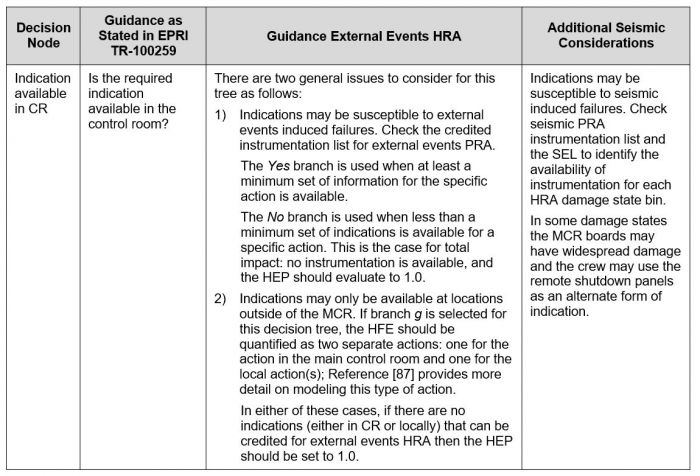Seismic Human Reliability Analysis (Task 12)
Task Overview
Objective
The objective is to develop human reliability analysis that is specific to SPRAs.
Purpose
The purpose is to provide guidance on performing human reliability analysis (HRA) for SPRAs. The primary audience for this guidance is HRA practitioners supporting the development and/or maintenance of seismic or other external event PRA models and associated HRA. The secondary audience is engineers engaged in the development of SPRAs who are interested in learning about the challenges to human response during a seismic event.
Guidance
The scope of this guidance includes:
- Overview of the HRA process for external events, including specific guidance on:
- - Identification and definition of human failure events
- - Feasibility assessment
- - Screening analysis
- - Detailed analysis
- - Model integration
- - Documentation
Human failure events (HFEs) define the probability of an operator to perform a specified, PRA credited action. They are informed by a timing analysis evaluating when an indication is presented to the operator, how long it takes the operator to become aware of the indication and diagnose the necessary action, and how much time remains (margin) before the action needs to be performed to successfully accomplish the PRA credited action. Performance shaping factors (PSFs) are evaluated to develop the HFE probabilities, including the following considerations:
- Cues and indications
- Timing
- Procedures and training
- Complexity
- Workload, pressure, and stress
- Human-machine interface
- Environment
- Special equipment
- Special fitness needs
- Crew communications, staffing, and dynamics
For SPRAs, operator actions can be identified in one of two ways:
- HFEs carried over from internal events PRAs or
- review of procedures and modeled accident sequences to identify new operator actions.
Analysis of the identified actions is dependent upon the level and type of damage done to the site by the seismic event – more severe contexts can present unique challenges to operators. For this reason, the latest guidance in EPRI 3002008093 grades those operator challenges by “HRA damage state bins.” In the SPRA, the seismic hazard is typically split into bins based on ground motion acceleration so failure probabilities for systems, structures and components (SSCs) can be calculated across the spectrum of the hazard. The combination of the environmental conditions and the types and number of SSC failures create a context for the operator actions modeled. HRA damage state bins are distinct from hazard bins in that they define the break points at which the underlying context of the action changes substantially enough to impact the reliability of the operator action. These break points are based on an understanding of what are critical performance drivers or PSFs. In this way, the HRA damage state bins define the general context for the human actions within those bins. HRA damage states are defined by grouping the plant SSCs by their level of expected impact on human performance if they fail (increased general workload, more difficult cognition, more challenging working environment, etc.). The damage state definitions are derived from EPRI’s guidance for response to a seismic event (3002005284). Thus, the HRA damage state bins provide the map between the PSFs and the PRA hazard bins, which represent levels of damage to the plant SSCs.
It is expected that the HRA analyst will have to interface with the PRA analysts and fragility analysts to correlate the HRA damage states with the PRA hazard bins and component fragilities used in the PRA. The first figure below shows how an internal events HFE can be divided into multiple events based on the HRA damage state bin, and how those actions map to PRA hazard bins. The second table shows an example of how one plant defined their plant-specific HRA damage state bins.
Once this mapping is done, the analysis can begin, using a screening analysis or detailed analysis. EPRI 3002008093 includes a screening tree that provides a multiplier to be applied on top of the internal events human error probability based on a series of factors, including time margin, HRA damage state bin, action location and action familiarity. The screening method can be implemented using FRANX version 4.4 or later.
EPRI 3002008093 also includes guidance for detailed analysis to systemically addresses seismic-specific considerations for each PSF of the qualitative analysis, including a discussion of seismic-specific information sources that can provide relevant information. The quantification model uses the EPRI HRA Methodology for internal events (TR-101711-T1). EPRI 3002008093 provides seismic-specific considerations for each component of the methodology. For example, the two figures below show one decision tree from the internal events methodology followed by additional seismic considerations for evaluation of that tree. The detailed analysis process can be applied using the EPRI HRA Calculator version 5.2 or later.
Supplemental Guidance
Related Element of ASME/PRA Standard
Part 5, Seismic Plant-Response (SPR)
EPRI Guidance
An Approach to Human Reliability Analysis for External Events with a Focus on Seismic (3002008093). Section 2.3 provides a detailed review of the relevant Standard requirements, including:
- A summary of external event requirements for HRA by hazard type (Table 2-1)
- A summary of differences between capabilities categories I and II for the HRA-related requirements (Table 2-2)
- A mapping of interfaces between seismic PRA and seismic HRA tasks, by requirement (Table 2-3)
EPRI/NRC-RES Fire Human Reliability Analysis Guidelines (EPRI 1023001 / NUREG-1921)
EPRI/NRC-RES Fire Human Reliability Analysis Guidelines: Qualitative Analysis for Main Control Room Abandonment Scenarios (EPRI 3002009215 / NUREG-1921 Supplement 1)
Guidelines for Nuclear Plant Response to an Earthquake (3002005284)
Systematic Human Action Reliability Procedure (SHARP) Enhancement Project: SHARP1 Methodology Report (TR-101711-T1)
Other Guidance
(none noted)



